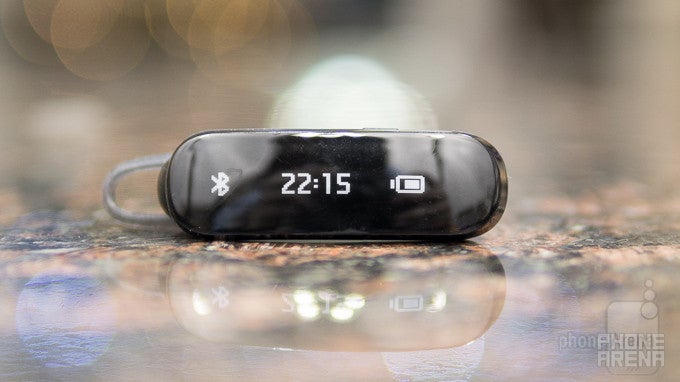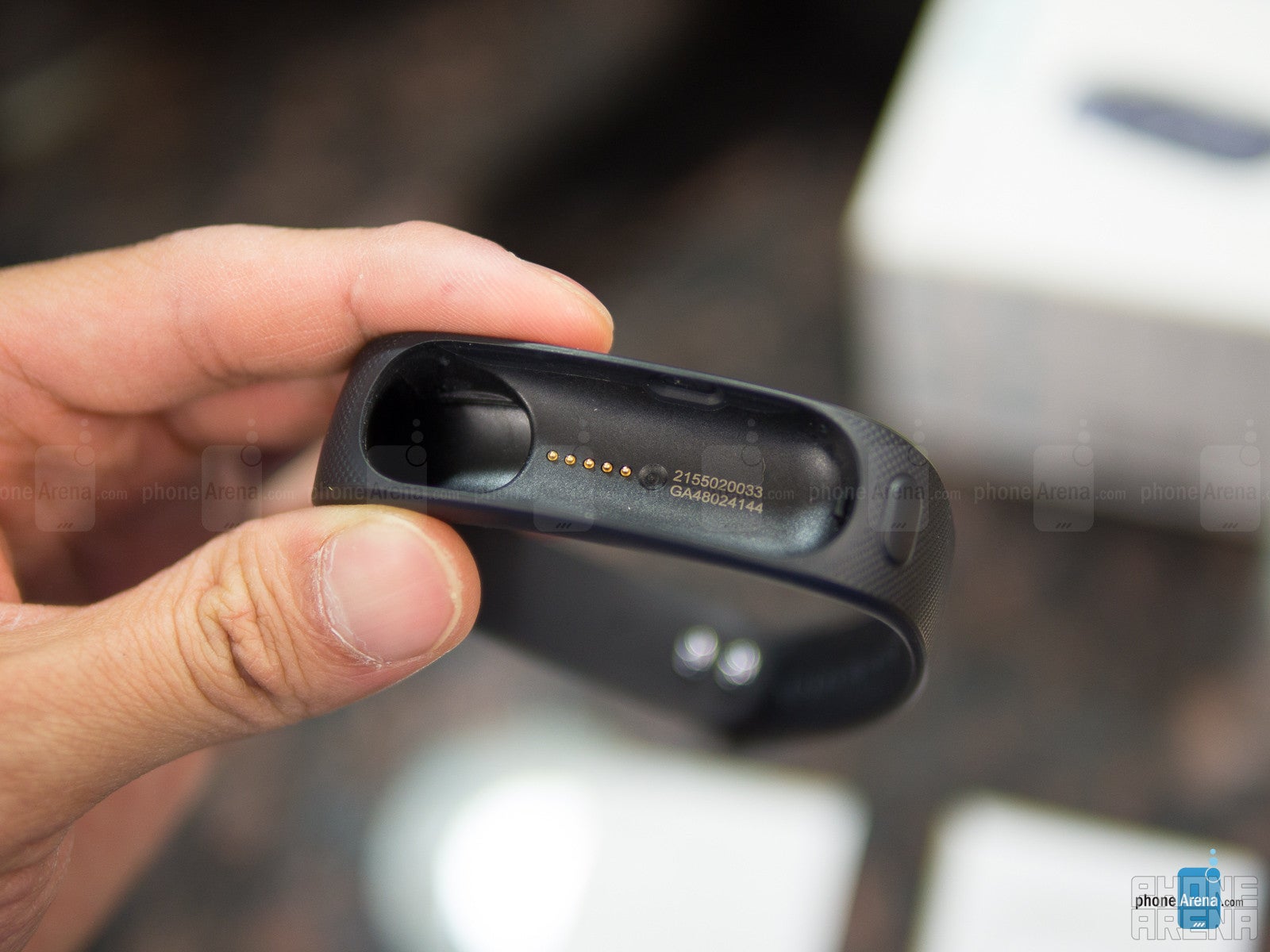Huawei TalkBand B1 Review

Introduction
Come on, there's no arguing that the fitness tracker space is a heavily crowded one at the moment - dominated by veteran players like Fitbit, and several smaller companies. Making the situation even more cramp, is the undeniable reality that several smartphone makers are also getting in with their own models. In distancing and distinguishing itself from the myriad of models floating around at the moment, the Huawei TalkBand B1 is an intriguing option due to the fact that it combines the health oriented features of a fitness tracker – while also doubling as a useful Bluetooth headset that's always within arm's reach.
Design
You wouldn't know that the Huawei TalkBand B1 is a Bluetooth headset at first, seeing that they've discretely fashioned it to look more like a wearable fitness tracker on your wrist. Essentially, it's comprised out of two components – the adjustable rubbery strap that also acts as the unit's charging cradle, and the actual Bluetooth headset/tracker unit with its 1.4-inch flexible OLED display. With a selection of straps to choose from, we really dig the color variety that consumers are presented with the TalkBand B1.
Interestingly enough, Huawei ingeniously designed the strap to be the unit's charging cradle as well by hiding its USB port connection on one end of the strap. This, of course, is just pure genius, seeing that we always have the charger on our wrist – as opposed to being a separate unit, which can sometimes be lost or misplaced.
Placing the unit into our ear, it feels snug for the most part, but the connection isn't secure enough to keep it in place if we're to do some heavy physical activity. Thankfully, the packaging includes several different sized silicone tips to fit various ear sizes. Also worth mentioning, the TalkBand B1 features an IP57 rating, which protects it from dust and makes it completely waterproof in up to 1 meter of water for 30 minutes. So yeah, no worries if you happen to shower with it on – or if you happen to take a quick dip in the pool.
Grazing over the strap, we certainly say that it's pretty comfortable, thanks in part to its textured rubbery pattern. Additionally, it's easily adjustable to fit a wide assortment of wrists – albeit, it might be loose for those with extraordinarily tiny wrists. Only two buttons are placed on the strap itself, one that dislodges the unit from the cradle, and another that goes over the button on the unit to turn on the display. Unfortunately, there are no other dedicated controls on the TalkBand B1 – meaning, volume adjustment is all handled by the connected device.
Display
As a fitness tracker, the TalkBand B1 doesn't look too different from the crop – though, it's still pretty attractive in its own right. However, as a Bluetooth headset, we'll say that it's rather bland looking. Its saving grace, however, is the 1.4-inch OLED display that occupies the majority of its facade – one that has a subtle greenish glow to it. In terms of visibility, its weak brightness output makes it nearly impossible to view under direct sunlight, but it's not overpowering at all under low light.
Our first inclination about the display is that it's touch sensitive, but that's just not the case here. Rather, pressing on the single button on the tracker turns on the display – with subsequent presses cycles through the data. Initially, it shows us the time, connection status, and battery life icon, but with each press of the button, we're able to check out how many steps we've taken, calories burned, and our sleep tally. Sadly, though, it only displays the current day's results – where the data accrued from previous days are only accessible via the app.
Huawei TalkBand app
Rejoice! The TalkBand B1 is compatible with Android and iOS devices, so all that's needed for you to use it is to download the companion Huawei TalkBand app. Relying on the Android app, it's a far cry from the comprehensive and informative offering we get from other fitness tracking apps. Quite frankly, it's downright basic with its functionality – only presenting us with graphs showing us the amount of steps we've taken and our total sleep.
Needless to say, its lack of informative data doesn't really try to coach or educate us in how to improve our habits. Other apps, by comparison, offer a rich set of features, such as calorie tracking, water consumption, and exercising selections, to provide us with an all-encompassing experience that actually enamors us to do better. When it comes down to it, Huawei's app just pales in comparison – it's rather disappointing to tell you the truth.
Connectivity
Pairing it with a Samsung Galaxy Note 4 is an easy process, thanks in part to its NFC fast pairing – where hovering our device over the tracker establishes the connection. In our experience, it's able to retain a connection for up to 25 feet before it's disconnected. Once that happens, the TalkBand B1 vibrates to indicate that the connection has been lost, and it again vibrates once it's reestablished.
Performance
Let's first talk about the Huawei TalkBand B1's Bluetooth headset performance. As a call comes in, the unit vibrates to notify us, and from there, we have the convenience of popping it out and inserting it into our ear. Setting the volume to its highest level on our smartphone, a Samsung Galaxy Note 4 in this case, it's rather weak with its overall output – making it problematic for use in noisy environments. Not only do we have to contend with that, but also with the thin and light voices we're presented with through the earpiece. It's undeniably tough trying to hold conversations, but our callers on the other end of the line fare better, as they're treated to mostly clear and audible voices.
Honestly, you can forget about trying to use the TalkBand B1 for music listening – mainly because of its weak volume output, lack of media controls, and its indistinct audio quality. Frankly, it's far from being the most ideal thing for the occasion, especially when all media controls, such as track forward/reverse and audio adjustment, are all done locally through the connected smartphone – as opposed to the TalkBand B1 itself.
Moving onto the fitness tracking portion of the unit, we'll certainly say that it's usable and accurate enough to provide us with some level of responsibility. Like most other trackers, it measures the amount of steps taken by our hand movements, which in turn, calculates the amount of calories burned by factoring things like our height, weight, and age. An issue for other wrist-worn trackers, the TalkBand B1 doesn't fall victim to those phantom steps that other trackers accrue when we wave our hand wildly in place.
Additionally, the TalkBand B1 also monitors our sleep level, which is done automatically – so there's no setting the mode on like some other trackers. That's fine and dandy, naturally, seeing that we don't need to bother about remembering to set it into the mode before we fall asleep. However, it's disappointing when the unit thinks we're asleep if we take off the unit and place it somewhere. From the looks of it, being stationary makes it think we're asleep.
Battery
Impressively, the Huawei TalkBand B1 is one of the longest-lasting fitness trackers we've ever used – easily outlasting several other popular models we've reviewed in the course of the last year. On the inside, it's packing along a 90 mAh, which might seem like an insignificant amount on paper, but boy does it deliver solid results. Just like what the manufacturer rates, the TalkBand B1 delivers an unbelievable 7 days of usage as strictly as a fitness tracker. In comparison, the FitBit Flex maxes out at 5 days – while the Samsung Gear Fit requires nightly charges.
Conclusion

Flaunting a price point of $129.99, it's right there with all the rest of the models vying for notoriety. Most high-end Bluetooth headsets are priced at that amount by themselves, but with this, it doubles as a fitness tracker – so it's a nice incentive to have. At the end of the day, it'll need more than basic functionality to really pull itself ahead of the pact.










Things that are NOT allowed: